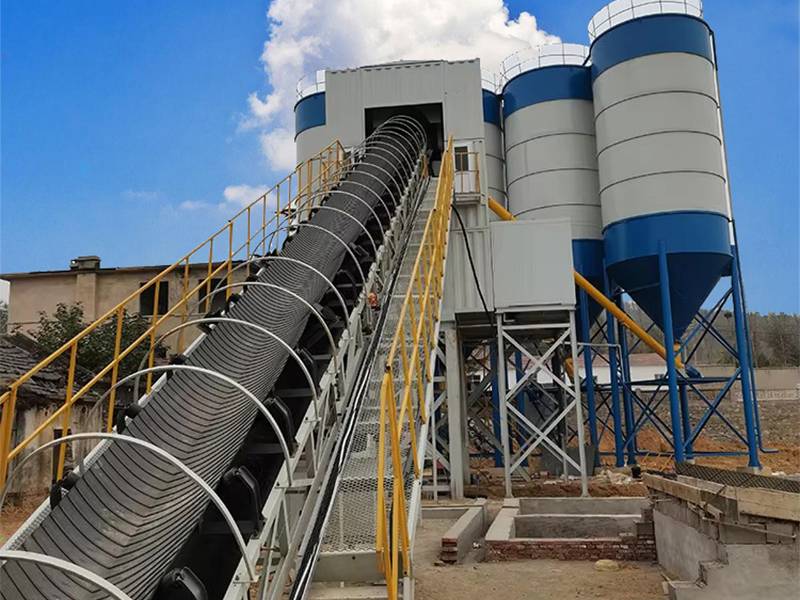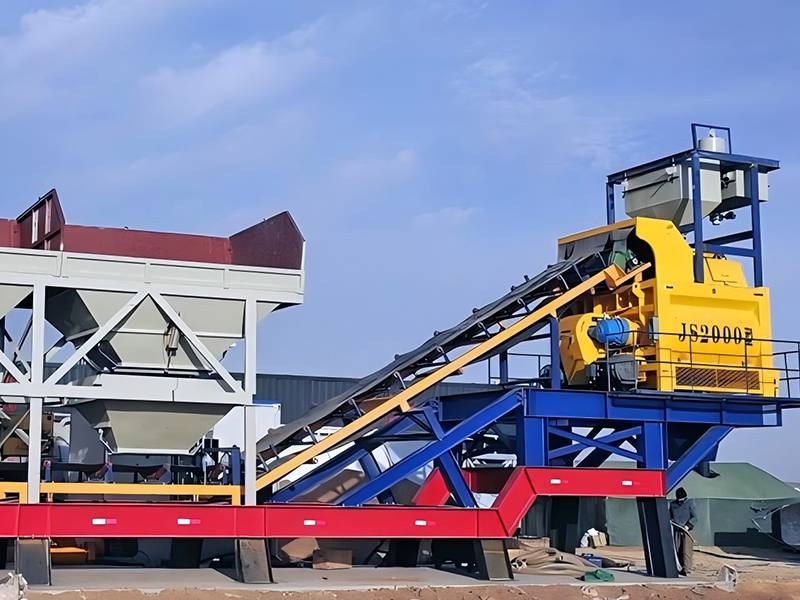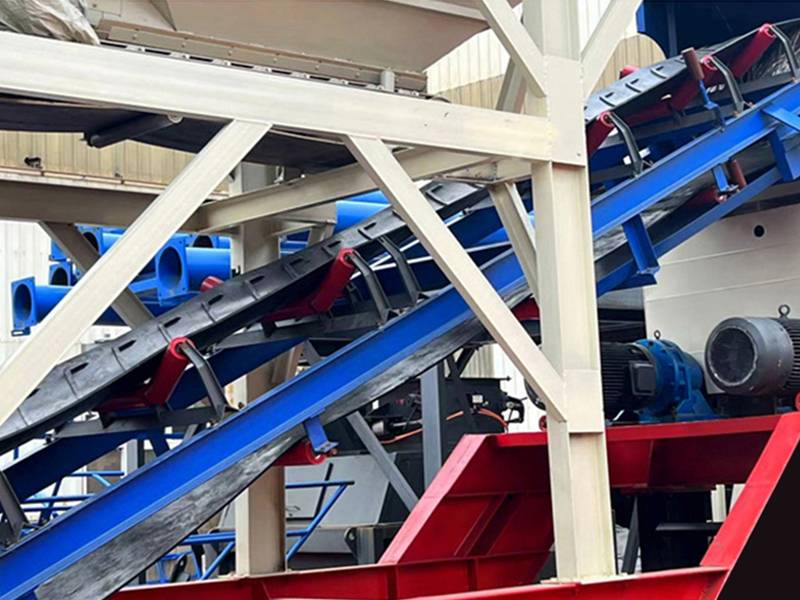Installation and Adjustment of Aggregate Belt Conveyor in Concrete Mixing Plant
The installation and adjustment of aggregate conveyor in concrete mixing station is the key link to ensure the efficient and stable operation of mixing station. Correct installation and adjustment can not only improve the service life of conveyor, but also ensure the quality and efficiency of concrete production. The installation and adjustment steps of aggregate conveyor in concrete mixing station will be introduced in detail below.
I. The preparation work before installation
Before installing the aggregate conveyor, a series of preparatory work is needed. First of all, check whether all parts of the conveyor are intact, such as conveyor belt, roller and bracket. Secondly, the installation position of the conveyor should be determined to ensure the smooth connection between the conveyor and other equipment in the mixing station. At the same time, it is necessary to prepare tools and equipment needed for installation, such as electric drills, screwdrivers and wrenches.



II. The installation steps of conveyor
1. Installation of brackets: According to the size and installation position of the conveyor, determine the height and spacing of brackets. Use an electric drill and screws to fix the bracket on the ground to ensure that the bracket is stable and reliable.
2. Install the roller: place the roller on the bracket and fix it with screws. Ensure that the gap between the roller and the bracket is even, and the roller axis is parallel to the ground.
3. Install the conveyor belt: put the conveyor belt on the roller and adjust the tension of the conveyor belt. Use a professional tensioning device to ensure that the conveyor belt is properly tensioned during operation.
4. Installation of motor and reducer: According to the power requirements of the conveyor, select the appropriate motor and reducer. Fix the motor and reducer on the bracket to ensure smooth transmission between them and the drum.
5. Connect the power supply and control circuit: according to the electrical schematic diagram, connect the power supply and control circuit of the motor and reducer. Ensure that the wiring of power supply and control lines is correct and firm.
III. The adjustment and optimization of conveyor
After the installation, the conveyor needs to be adjusted and optimized to ensure its normal operation and performance.
1. Adjust the tension of the conveyor belt: By adjusting the tensioning device, the conveyor belt can maintain a proper tension. Too tight a conveyor belt will increase the wear between the roller and the conveyor belt, while too loose a conveyor belt may cause the conveyor belt to slip or run off.
2. Adjust the parallelism and levelness of the drum: use a spirit level and a ruler to check the parallelism and levelness of the drum to ensure that the axis of the drum is parallel to the ground and the spacing between the drums is even. If necessary, use the adjusting shim or adjustment screw to make adjustment.
3. Adjust the transmission clearance of the motor and reducer: adjust the transmission clearance according to the operating instructions of the motor and reducer. Ensure that the transmission clearance is moderate, neither too large will lead to the reduction of transmission efficiency, nor too small will lead to overheating or damage of the equipment.
4. Optimize the conveying speed and flow: adjust the conveying speed and flow of the conveyor according to the production demand and conveying distance of concrete. By adjusting the speed of the motor and the reduction ratio of the reducer, the conveyor can achieve a better running state.
5. Regular inspection and maintenance: regularly inspect all parts of the conveyor, such as conveyor belt, roller and bracket, to ensure that they are in good condition. Replace the seriously worn parts in time to keep the conveyor in good condition. At the same time, the conveyor should be lubricated and cleaned regularly to ensure its normal operation.
IV. Matters needing attention
1. Safety first: In the process of installation and adjustment, the safety operation rules should be strictly observed to ensure the safety of people and equipment.
2. Professional operation: It is recommended that technicians with professional qualifications carry out the installation and adjustment work to ensure the installation quality and normal operation of the equipment.
3. Detailed records: During installation and adjustment, all data and operation processes should be recorded in detail for reference in future maintenance and overhaul.
Through the installation and adjustment of the above steps, the aggregate conveyor of concrete mixing station will be able to run stably and provide reliable support for concrete production. At the same time, reasonable maintenance is also the key to ensure the long-term stable operation of the conveyor. Only by doing a good job in installation, adjustment and maintenance can we ensure the efficient and stable operation of the concrete mixing station.












